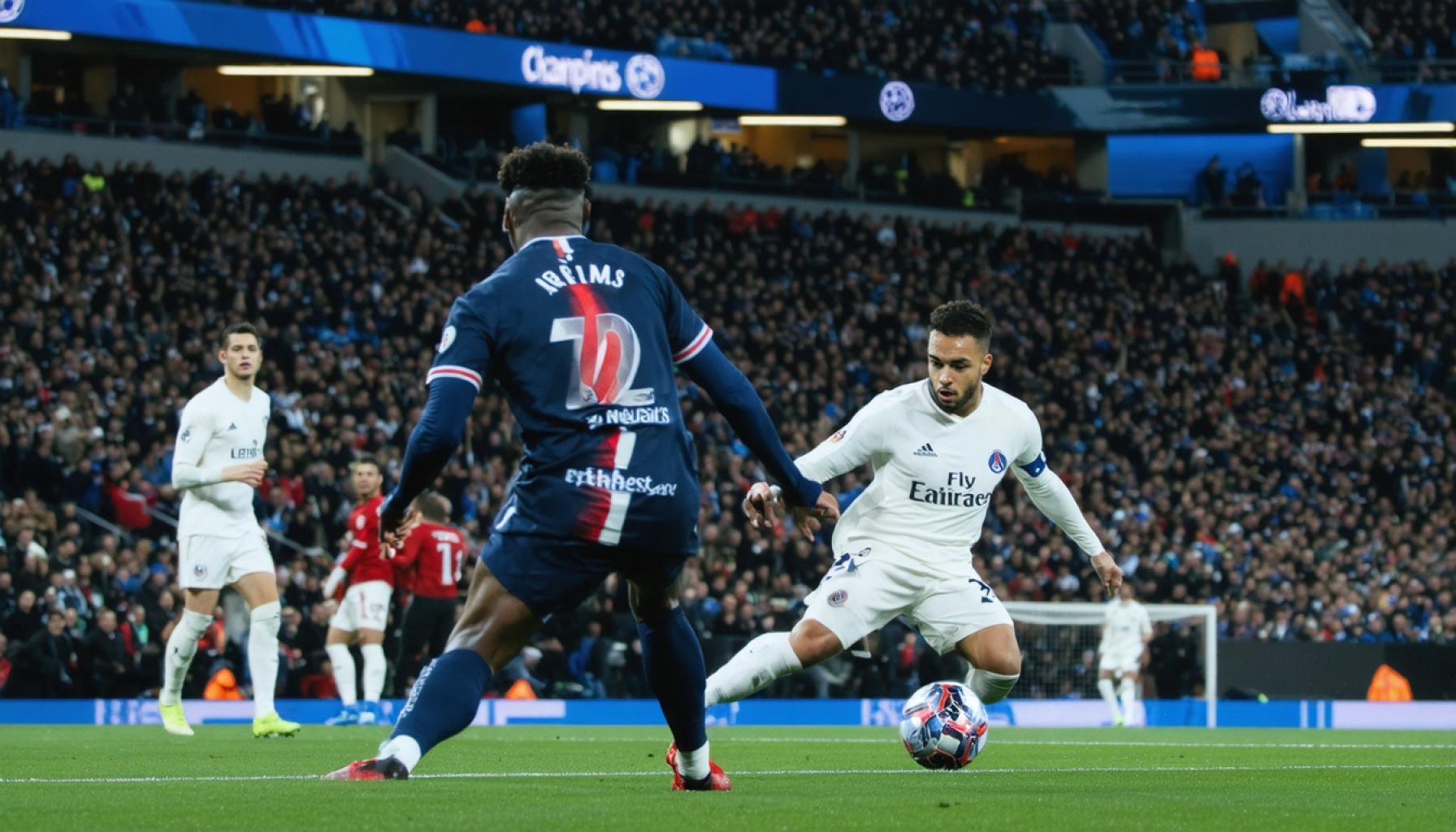- PSG defeated Liverpool in a highly-charged Champions League match, marked by a controversial goal.
- The contentious goal led to a social media uproar, with debates over its legitimacy.
- Controversy centered around semi-automated offside technology, which uses machine learning for precision.
- UEFA confirmed the goal’s validity, intensifying discussions between traditionalists and technology proponents.
- The incident highlights the ongoing debate about balancing soccer’s human elements with technological advancements.
- It emphasizes soccer’s evolving nature and the importance of maintaining its intrinsic passion and unity.
A tumultuous roar echoed through the Parc des Princes as Paris Saint-Germain (PSG) clashed with Liverpool in a riveting Champions League showdown. It was an evening charged with intensity, where every pass seemed fraught with the weight of history. Yet, what truly emerged from this spectacle was not just a hard-fought victory for PSG, but a spark of controversy that sent the sports world into a frenzy.
Amidst the spectacle, a controversial goal by PSG seared its mark into the annals of soccer debate. The moment unfurled like a carefully choreographed dance—swift, exact, and seemingly perfect—until it wasn’t. Social media erupted with claims that the goal, a crucial turning point in the match’s narrative, should have been nullified. Eyebrows were raised and hashtags trended as fans across the globe scrutinized every pixel of the play.
The epicenter of this digital storm was the use of semi-automated offside technology, a tool heralded for its precision but also bemoaned for its complexity. The system, which utilizes machine learning and advanced tracking, painted a meticulous picture of the field. Still, interpretations varied wildly with enthusiasts passionately dissecting the revelations of digitized lines that resembled abstract art.
In a decisive announcement, UEFA—the revered governing body of European football—affirmed the goal’s legitimacy, citing clear adherence to the rules set forth. This decision, while conclusive, only fanned the flames of an already heated discourse. The scrutiny underscored a broadening divide between purists of the game and advocates for technological intervention, each side brandishing compelling arguments for the soul of soccer.
Here lies the heart of the debate: In a sport as visceral and human as soccer, where does one draw the line between tradition and technology? The question lingers like a shadow over the pitch, as both players and spectators grapple with an evolving game that blends timeless passion with cutting-edge innovation.
The tale of PSG’s contentious victory is a mirror reflecting a broader narrative playing out on the world stage. It serves as a potent reminder that in the dance between man and machine, balance is key, and that the heartbeat of soccer lies in its ability to enthrall, challenge, and ultimately unite.
The Controversial Goal That Changed the Game: PSG vs. Liverpool
Introduction
On a night that reverberated with the echoes of past soccer legends, Paris Saint-Germain (PSG) and Liverpool clashed in a Champions League spectacle that was memorable not just for PSG’s victory, but for a controversial goal that has sparked an ongoing debate. This article delves into the facts about this contentious event and explores broader issues of technology in soccer.
Technology in Soccer: Revolution or Regression?
The controversial goal emphasized the growing impact of technology in soccer. Specifically, the semi-automated offside technology was at the center of this debate. This system combines machine learning and advanced tracking to offer precise judgments. While technology adds accuracy, it often faces criticism for removing the human touch and inherent unpredictability fans cherish.
Pros of Semi-Automated Offside Technology:
– Accuracy: Offers precise decisions by analyzing player positions and the ball’s movement in real-time.
– Consistency: Reduces human error in decision-making, thereby maintaining consistent enforcement of rules.
– Speed: Potentially speeds up the process of making critical decisions during matches.
Cons:
– Complexity: The technology can be difficult for casual fans to understand, leading to confusion.
– Perception: Many fans feel it detracts from the human element and spontaneity of the game.
– Cost: High implementation costs could be prohibitive for smaller leagues or clubs.
A Broader Discussion: Tradition vs. Technology
This event has highlighted a broader philosophical divide:
– Purists’ Argument: Soccer should remain a human game, emphasizing its emotional and unpredictable nature.
– Advocates’ Standpoint: Incorporating technology enhances fairness and enables better decision-making.
Real-World Use Case
Football leagues worldwide are observing how UEFA integrates such technology. Successful implementation could lead to wider adoption in other leagues, thereby transforming soccer globally.
Insights & Predictions
Looking ahead, it is likely that technology will continue to play a significant role in soccer, much like VAR (Video Assistant Referee) has become indispensable in decision-making. However, the challenge will be maintaining a balance that preserves the essence of the game.
Security & Sustainability
– Data Security: Ensuring the security of data collected by tracking systems is paramount to prevent manipulation.
– Environmental Impact: Consideration of the environmental footprint of installing and maintaining advanced tech equipment in stadiums.
Actionable Recommendations
1. Fan Education: Leagues should focus on educating fans about technology to enhance understanding and acceptance.
2. Gradual Implementation: Introduce technology in phases, allowing stakeholders to adjust smoothly.
3. Feedback Mechanism: Establish an open channel for players, coaches, and fans to provide feedback on tech usage.
Conclusion
As debates rage on, the PSG vs. Liverpool match serves as a critical case study in the evolution of soccer. While technology promises to enhance the game, finding the right balance is crucial to preserving its heart and soul. For more on soccer technology and updates, visit UEFA.
These considerations are vital for ensuring that fans continue to experience the passion and excitement that soccer is known for, while also embracing innovations that promise a fair and engaging future for the sport.
